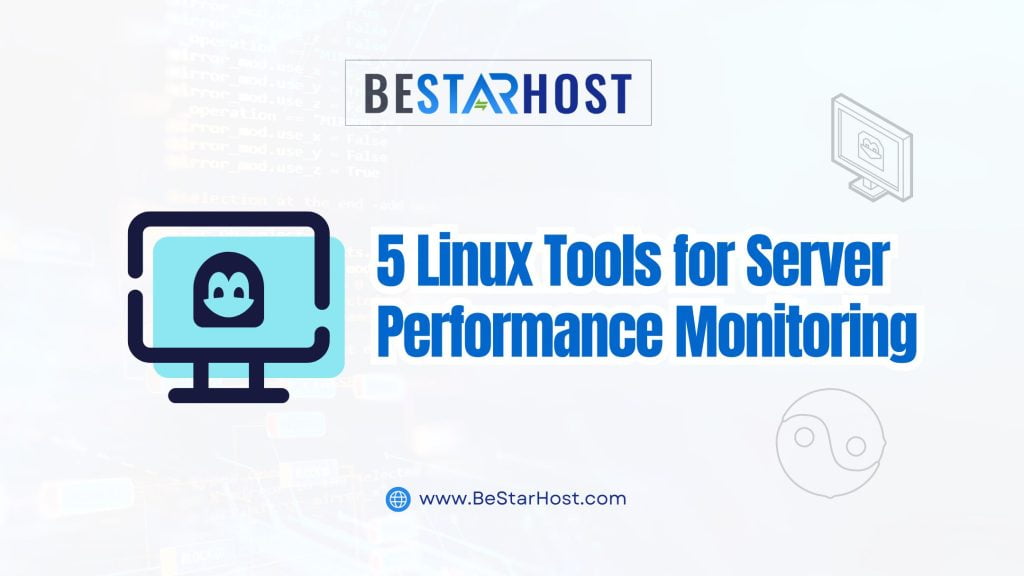 As the backbone of countless services, Linux servers demand rigorous performance monitoring to ensure they run efficiently and reliably. For system administrators, choosing the right set of tools is crucial for maintaining optimal performance, diagnosing issues, and planning for capacity. Thankfully, the open-source community provides a plethora of powerful Linux server monitoring tools that are both free and effective. In this blog, we’ll delve into five indispensable Linux performance monitoring tools that will help you keep your servers in top shape.
As the backbone of countless services, Linux servers demand rigorous performance monitoring to ensure they run efficiently and reliably. For system administrators, choosing the right set of tools is crucial for maintaining optimal performance, diagnosing issues, and planning for capacity. Thankfully, the open-source community provides a plethora of powerful Linux server monitoring tools that are both free and effective. In this blog, we’ll delve into five indispensable Linux performance monitoring tools that will help you keep your servers in top shape.
1. Nagios
Nagios is one of the most well-known and widely used Linux server monitoring tools. Its robust architecture allows for comprehensive monitoring of system resources, network protocols, applications, services, servers, and network infrastructure.
Key Features:
- Extensibility: Nagios supports plugins that extend its capabilities, allowing for custom scripts to monitor virtually any service or application.
- Alerting: The tool offers customizable alerting via email, SMS, or other methods to notify administrators of potential issues before they become critical.
- Scalability: Nagios is suitable for both small and large environments, making it a versatile choice for organizations of all sizes.
Use Case: Nagios is ideal for environments where you need a reliable and extensible monitoring solution. Its ability to integrate with other tools and its extensive plugin library make it a powerful asset for any Linux performance management strategy.
2. Prometheus
Prometheus is an open-source monitoring and alerting toolkit that has gained significant popularity due to its flexible querying language and modern design. Originally developed at SoundCloud, Prometheus is now a standalone open-source project maintained independently.
Key Features:
- Time-Series Database: Prometheus stores all data as time series, enabling efficient querying and analysis.
- PromQL: Its powerful query language, PromQL, allows for complex operations on the collected data.
- Alertmanager: Prometheus comes with an integrated alerting system, Alertmanager, which handles deduplication, grouping, and routing of alerts.
Use Case: Prometheus is perfect for dynamic cloud environments and containerized applications. Its ability to collect multi-dimensional data and its robust querying capabilities make it an excellent choice for detailed performance analysis and real-time monitoring.
3. Zabbix
Zabbix is an enterprise-class monitoring solution designed to track the status of various network services, servers, and other network hardware. It provides an all-in-one monitoring solution for performance and availability, making it a favorite among large enterprises.
Key Features:
- Agent-based and Agentless Monitoring: Zabbix supports both agent-based and agentless monitoring, giving flexibility in deployment.
- Flexible Notification: Customizable notifications ensure that the right people get the right information at the right time.
- Visualization: Zabbix offers extensive visualization options, including graphs, network maps, and screens.
Use Case: Zabbix is suitable for complex and large-scale environments where detailed monitoring and extensive customization are required. Its broad range of features makes it a comprehensive Linux server monitoring software.
4. Grafana
Grafana is not a monitoring tool per se, but a powerful visualization and analytics software that can integrate with a variety of data sources, including Prometheus, InfluxDB, and Elasticsearch. It is widely used to create dynamic, interactive dashboards for real-time performance monitoring.
Key Features:
- Multiple Data Sources: Grafana supports numerous data sources, allowing you to consolidate metrics from different monitoring systems into a single dashboard.
- Custom Dashboards: It provides extensive customization options for creating dashboards tailored to specific monitoring needs.
- Alerting: Grafana includes built-in alerting capabilities, ensuring you can stay on top of critical issues.
Use Case: Grafana is perfect for administrators who need a versatile and visually appealing way to aggregate and analyze metrics from various Linux performance monitoring tools. Its ability to integrate with other systems makes it a cornerstone of modern monitoring stacks.
5. Collectd
Collectd is a daemon that collects, transfers, and stores performance data of Linux servers. It gathers metrics from the operating system and applications, and it can forward the collected data to various destinations, including RRD (Round-Robin Database) files or monitoring solutions like Graphite.
Key Features:
- Wide Range of Plugins: Collectd offers a rich set of plugins for monitoring different aspects of system performance, from CPU usage to application-specific metrics.
- Lightweight: It is designed to have a minimal footprint on the system, ensuring it does not affect server performance while monitoring it.
- Flexibility: With its extensive plugin system, Collectd can be easily extended to collect custom metrics.
Use Case: Collectd is ideal for environments where lightweight and efficient data collection is required. Its compatibility with other monitoring systems makes it a versatile choice for integrating into larger performance management solutions.
Choosing the right Linux server monitoring tools is crucial for maintaining optimal performance and ensuring the reliability of your servers. Whether you’re managing a small server cluster or a large enterprise network, the tools mentioned above—Nagios, Prometheus, Zabbix, Grafana, and Collectd—offer a range of features that can be tailored to your specific needs. By leveraging these tools, you can gain deep insights into your system’s performance, quickly diagnose issues, and ensure your servers run smoothly.
Remember, the best approach often involves combining multiple tools to take advantage of their unique strengths. For instance, using Prometheus for data collection and Grafana for visualization can provide a powerful, flexible monitoring solution. Similarly, integrating Nagios with Collectd can enhance your monitoring capabilities by combining detailed data collection with robust alerting.
Investing time in setting up and configuring these tools will pay off in the long run by providing you with the data and alerts needed to maintain and improve your Linux server performance. Happy monitoring!
